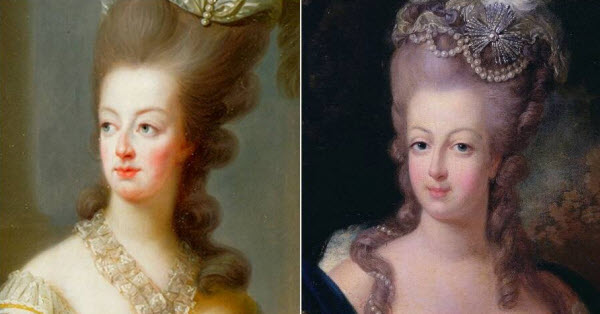Stories tell of a queen who went to sleep with dark black hair and woke up the next morning, just before her execution, with hair mysteriously turned white. Another tale speaks of a soldier whose hair changed from black to white overnight during a fierce battle. These stories, while strange, describe a phenomenon now recognized in the scientific community as “Marie Antoinette Syndrome.” This condition is named after the young French queen whose hair supposedly turned white abruptly following her failed attempt to flee during the French Revolution. Though initially dismissed by the scientific community, this syndrome, also known as “canities subita,” has been reported in several cases over the years. Many doctors have observed sudden changes in hair color due to extreme stress or fear, and recent research has gradually confirmed its existence.
Historically, the syndrome traces back to the French Revolution. In June 1791, Queen Marie Antoinette persuaded her husband, King Louis XVI, to flee to lands controlled by her brother, Emperor Joseph II, whose 10,000-strong army would help restore them to power. The plan, however, was disastrous. Disguised as a nanny and servant, the royal couple fled Paris under the cover of night, hoping to reach their allies before being captured. Unfortunately, news of their escape spread rapidly, and the French National Guard launched a search for the royal family. They were apprehended in the town of Varennes, where the king’s identity was confirmed by his portrait on French currency. The royal couple was escorted back to Paris by armed guards and civilians, never to leave the city again. The king was tried, convicted of treason, and executed in 1793, soon followed by his wife, Marie Antoinette.

Some say that upon her return to Paris, at the age of 35, Marie Antoinette was no longer the same woman who had fled. Her hair, once dark, had turned white from the shock of the failed escape. Henriette Campan, one of her attendants, noted, “The first time I saw Her Majesty after the unfortunate events of the Varennes journey, her features had not changed much. However, after her first kind words to me, she removed her hat and asked me to notice the effect grief had on her hair, which had turned white overnight, making her look like a woman in her seventies.” This story is the most famous instance of what has since been termed Marie Antoinette Syndrome, puzzling scientists for centuries. It is well known that hair turns white gradually with age, leading many to question whether such a dramatic transformation could really occur overnight.

Marie Antoinette’s case is the most well-documented example, but it is not the only one. Centuries before the French Revolution, Sir Thomas More, a renowned humanist and lawyer, reportedly experienced a similar transformation. After refusing to end his first marriage and break from the Catholic Church, More chose imprisonment and execution. The night before his execution in 1535, More’s hair turned white suddenly. Another story tells of Mary, Queen of Scots, whose son consented to her execution in 1587. Her hair allegedly turned completely white the night before her death. A witness at the time, Pierre de Bourdeille, wrote, “It was not old age that turned her hair white, but the troubles and sorrows she endured, particularly during her imprisonment.” In 1915, during World War I, doctors observed a similar phenomenon when a French soldier nearly died after a mine explosion during battle. A scientific journal of the time reported that the soldier’s hair had turned white on the left side of his head by the following day.

Despite these historical accounts, many in the medical field remain skeptical. Professor Desmond Tobin, a dermatologist at University College Dublin, argues that such a sudden change is impossible because there are no living cells in hair. According to him, psychological or social stress cannot affect already-formed hair fibers but can only impact those still growing. Other theories suggest that Marie Antoinette may have dyed her hair white to aid her escape from Paris. In Sir Thomas More’s case, some propose that he suffered from alopecia areata, a condition that causes sudden hair loss. Dark, pigmented hair is more likely to fall out, leaving behind white hair, which may explain the perception of overnight whitening.
In 2020, a study published in Nature brought fresh insights. The study revealed that stress exposure could destroy the cells responsible for hair pigmentation in mice, causing patches of white fur to appear suddenly. This suggests that hair whitening is possible, though the likelihood of it happening overnight remains debatable. However, in extreme situations like those faced by Marie Antoinette, it might just be possible.
This rare and mysterious phenomenon, while still not fully understood, continues to captivate both historians and scientists. Whether caused by physical stress or emotional trauma, the sudden transformation of hair color serves as a testament to the profound impact of fear and anxiety on the human body.
